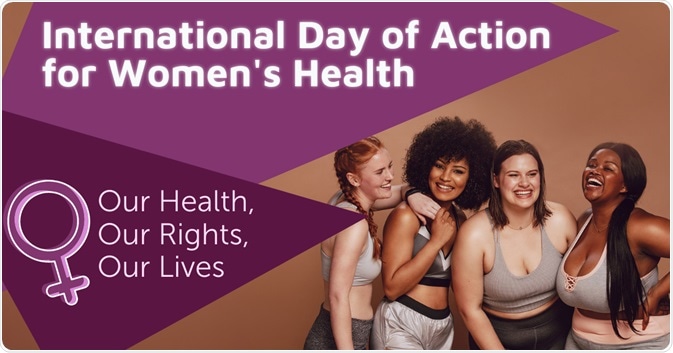The Global Health Problem of Violence Against Women

Violence against women is a “global public health problem of epidemic proportions, requiring urgent action”, the World Health Organization declared in 2013.

Violence against Women. Image Credit: Jacob Lund/Shutterstock.com
Unfortunately, sexual and physical violence against women is commonplace across the world. It is a breach of human rights and causes significant long-lasting physical and psychological harm and even death. The statistics estimate that it is highly likely that any given person knows at least one woman who has been subject to physical or sexual violence, even though they may not be aware of it.
Here, we will discuss the data that highlights the epidemic proportions of violence against women, the detrimental impact it has on women’s physical and mental health, and the urgency of required preventative efforts.
Physical and sexual violence
Alarmingly, around 1 in 3 women, roughly 30%, have suffered from physical and/or sexual violence by an intimate partner or sexual violence by a non-intimate partner, according to a 2018 data analysis conducted by WHO on behalf of the UN Interagency working group. 6% of women report having been sexually assaulted by someone who is not their partner, although less data is available on this kind of sexual assault, and in reality, the figure could be much higher. Some statistics estimate that as many as 3 in 4 sexual assaults go unreported.
Regardless of the global region, violence against women remains pervasive and it impacts women from a very young age. Rape and physical violence is not confined to countries where women’s rights are restricted. It is an everyday occurrence across the globe. In the UK, 1 in 5 women has been sexually assaulted. In the US, 1 in 6 is a victim of a completed or attempted rape (14.8% completed, 2.8% attempted).
The health implications of physical and sexual violence against women
In fact, women aged between 15 and 44 are more likely to be the victim of rape or domestic violence than they are to develop cancer or be in a car accident. The impact of these crimes against women is significant. There is a clear significant impact of sexual and physical violence on women’s mental and physical health.
US data reveals that 33% of women who have been raped contemplate suicide, and 13% make a suicide attempt. Additionally, 31% of women develop PTSD after being raped and they are more likely than women who have not been raped to suffer a major depressive episode. They are also 1.5 times more likely to contract a sexually transmitted infection.
Women who have suffered physical violence at the hands of an intimate partner are 16% more likely to suffer a miscarriage and are at a 41% elevated chance of having a pre-term birth than women who have not suffered this violence.
Murder and domestic violence
Violence against women causes unnecessary deaths. Not only are women more likely to take their own lives, but cases of sexual and physical assault can also end in homicide. Around 38% of women who are murdered around the world are killed by their intimate partners. Given that 35% of women around the world are affected by domestic violence, the urgency to prevent this type of violence against women is intense.
Further to this, rape is also linked to murder. While the exact figures are unknown, there is a clear link between the two crimes, with rape often preceding murder in homicide cases.
Impact of COVID-19 pandemic on violence to women
In 2020, governments around the world imposed strict lockdown regulations for significant parts of the year to curb the spread of the virus. This has increased the exposure of women to abusive partners. As a result, domestic violence against women may have been exacerbated.
Data collected from England and Wales during the pandemic has shown that during this period there was an increase in reports of domestic abuse. UN Women have also reported an increase in calls to domestic violence helplines since the COVID-19 outbreak. In addition, some countries have chosen to redirect funds away from supporting causes addressing violence against women towards COVID-19 relief, which may have further exacerbated the problem.
What is being done to prevent violence against women?
Violence against women is prevalent around the world and although many agencies and charities have been established to try to prevent incidences of sexual and physical violence against women across the globe, the prevalence of acts of violence against women remains alarmingly high. It is having a significant impact on female physical and mental health. The current COVID-19 pandemic has served to further exacerbate the problem that the WHO has declared to be of “epidemic proportions”.
Sexual and physical violence is completely preventable. Rather than other health epidemics, such as infectious diseases, violence against women is a result of the choices made by another human. A person cannot transmit sexual or physical violence, they chose to act in that way. There is an urgent need to address the deviant behaviors linked to violence against women and to foster a culture where women’s rights are respected and are truly seen as equal.
There is no simple solution to this: to effectively stop violence against women a multi-factor approach needs to be taken where violence is stopped before it occurs. This requires governmental involvement, the implementation of laws that support equality, investment in women’s organizations, and addressing discrimination against women in all its forms.
References
- Domestic abuse during the coronavirus (COVID-19) pandemic, England and Wales: November 2020. UK government. Available at: https://www.ons.gov.uk/peoplepopulationandcommunity/crimeandjustice/articles/domesticabuseduringthecoronaviruscovid19pandemicenglandandwales/november2020
- Facts and figures: Ending violence against women. UN Women. Available at: https://www.unwomen.org/en/what-we-do/ending-violence-against-women/facts-and-figures
- Global and regional estimates of violence against women: prevalence and health effects of intimate partner violence and non-partner sexual violence. World Health Organization. Available at: https://apps.who.int/iris/bitstream/handle/10665/85239/9789241564625_eng.pdf?sequence=1
- The Global Rape Epidemic. Equality Now. Available at: https://www.equalitynow.org/the_global_rape_epidemic_learn_more
- The Shadow Pandemic: Violence against women during COVID-19. UN Women. Available at: https://www.unwomen.org/en/news/in-focus/in-focus-gender-equality-in-covid-19-response/violence-against-women-during-covid-19
- Violence against women. World Health Organization. Available at: https://www.who.int/health-topics/violence-against-women#tab=tab_1
Last Updated: May 27, 2021

Written by
Sarah Moore
After studying Psychology and then Neuroscience, Sarah quickly found her enjoyment for researching and writing research papers; turning to a passion to connect ideas with people through writing.
Source: Read Full Article
